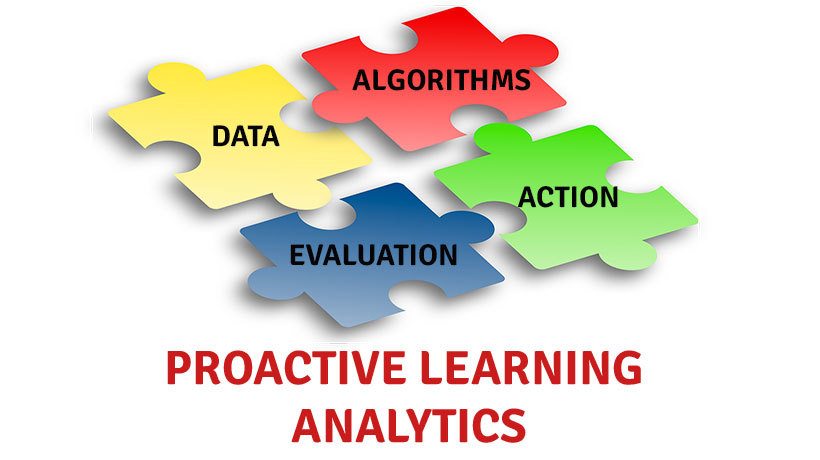Learning Analytics: Proactive Or Reactive?
Learning analytics is already a trending topic. In fact, it is so trendy that every Learning Management System vendor claims to have an analytics solution already in place. Analytics is a term used with a very wide scope within the industry. Simple statistics, graphical reports, dashboards, etc. are now referred as analytics. No matter what analytics solution is available at your Learning Management System or how this solution is being classified. There is a key question you should ask yourself: Are my learning analytics proactive or reactive? The answer to this question is what defines your maturity level in terms of learning analytics.
Proactive And Reactive Learning Analytics
Proactive analytics influence the ongoing learning processes. Reactive analytics influence the future learning processes.
Let me give you an example. If my analytics engine is predicting that several students will fail unless action is taken, I may still change the future and provide additional support to those students. This is a clear example of proactive analytics. On the opposite side, if my dashboard shows how was the performance of my students in a course, I may influence future editions based on this report, but I cannot do anything about those students that already failed.
There are 2 important elements when we talk about proactive analytics:
- Prediction.
Proactive analytics predict the future based on the past and on the present behaviors and performance of the students. Accurate predictions will lead to better actions. - Recommendation.
Some predictive analytics engines are not only able to predict, but also to recommend the correct course of action. Those systems have an additional level of sophistication and complexity.

Given the current eLearning technology state of the art, you should try to implement proactive analytics solutions within your institution or company. But before you call your Learning Management System vendor and ask about it or before you explore the market for existing solutions, let me discuss some important aspects of proactive analytics.
4 Key Aspects Of Proactive Analytics
1. Data.
Data is the most important asset when it comes to implementing prediction-based systems. To generate proper proactive learning analytics, you need to have enough data and you need to have quality data.
Predicting the future is not a one-step task. Predictive systems refine their calculations by processing all available data at a given state. Expect your proactive analytics engine to evolve towards better predictions. For example, the more students go through a course, the better the predictions will be about the expected outcomes on this course.
Quality of your data is also a key factor. If not all the elements influencing a given learning process are captured, predictions will not be as accurate as they could. Imagine a course where you have five evaluation quizzes and only one of them is made available to the analytics engine. In this case, we are biasing the calculations by not providing the system all the available information.
2. Algorithms.
Algorithms are the second important element. Algorithms are the mathematical calculations used to derive predictions from data. If you develop your in-house predictive analytics engine you will have to create the algorithms that make sense for your existing data. If you go for a third-party solution, make sure it can predict what is relevant for you, in terms of maximizing your students’ performance and getting enough information to improve your teaching and business processes.
3. Action.
The “from information to action” step is also critical. You need to have in place mechanisms and processes to act on the predictions or follow up on the recommendations provided by the analytics engine. At the end of the day, action is what matters. In fact, improvement resulting from action is what really matters.
4. Evaluation.
Finally, being able to evaluate your analytics engine closes the loop. Ideally, you should understand the accuracy of your predictions as well as the effectiveness of the actions conducted as a result of those predictions. This will help on improving your learning analytics in the long run.
Final Word
As we have described data, algorithms, action, and evaluation are the 4 pieces of the predictive analytics puzzle. How well you are on those, will determine the success of your analytics journey.
Now, imagine a bright future where you know in advance:
- Which students require additional tutoring.
- Which content fits a given student.
- Which activities are relevant for the students enrolled in a course.
- Which variables of your teaching style are the most influential for a student.
- Etc.
This is predictive learning analytics. Exciting, right?
Now, it is time for you to start thinking about the next steps to make predictive analytics a reality within your organization. Believe me, it is worth it.









